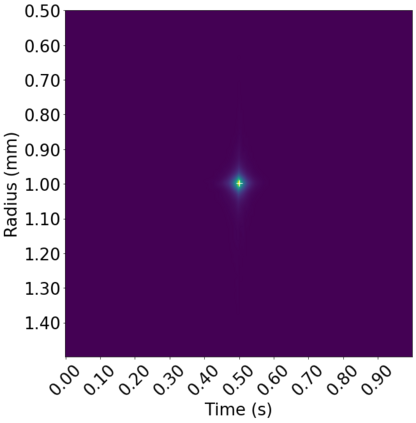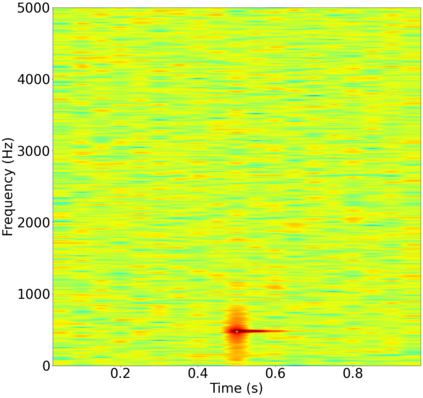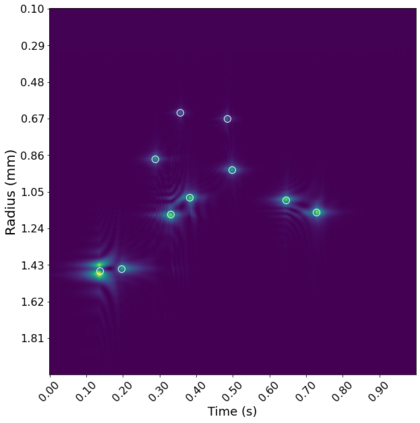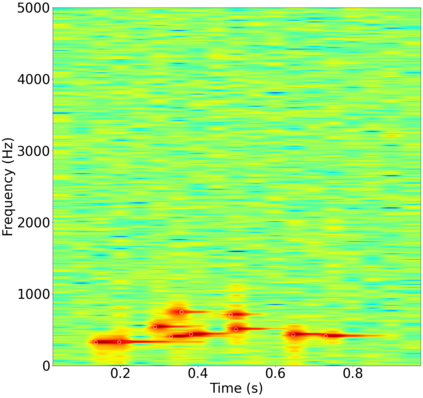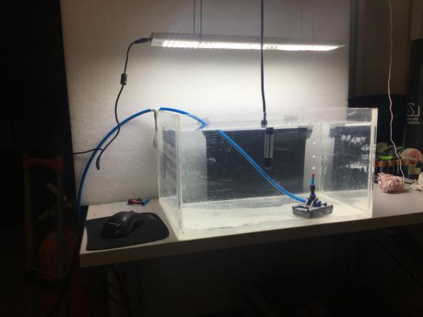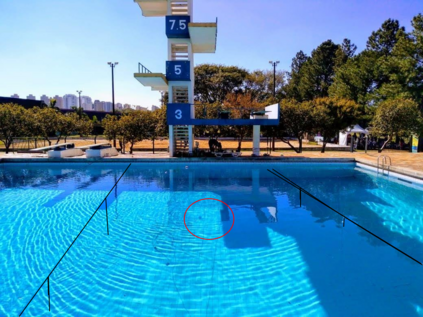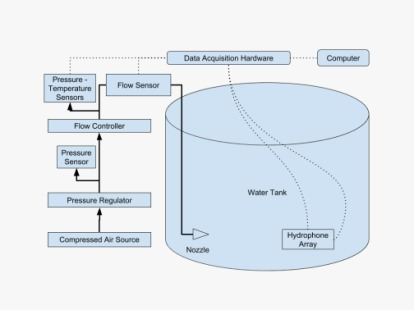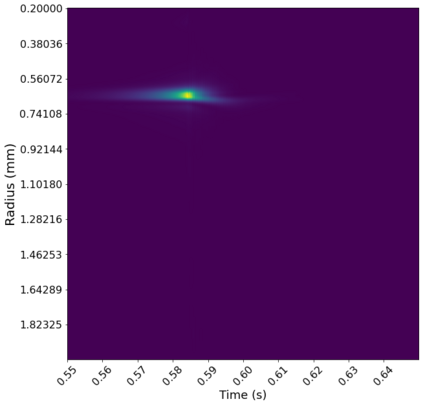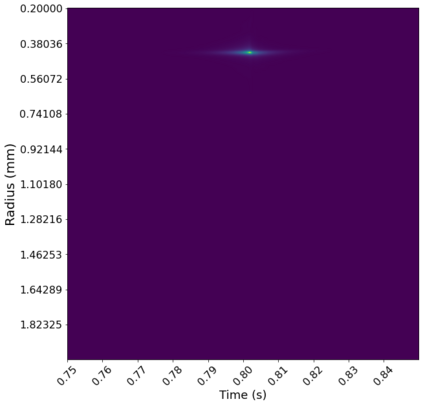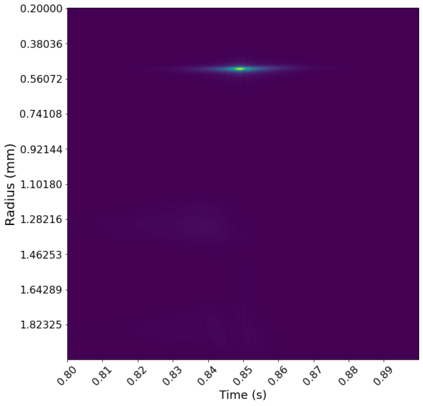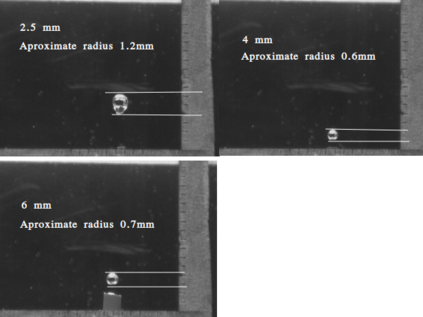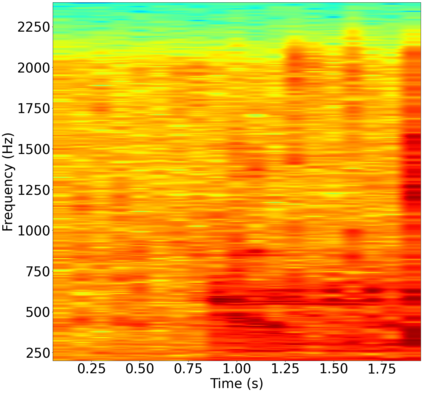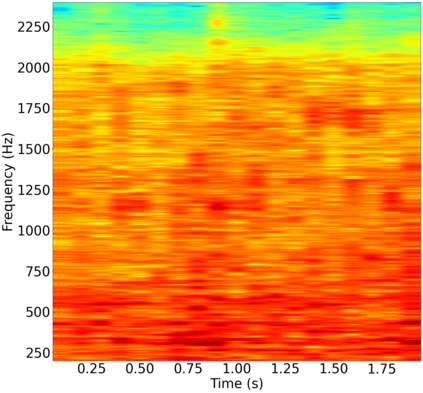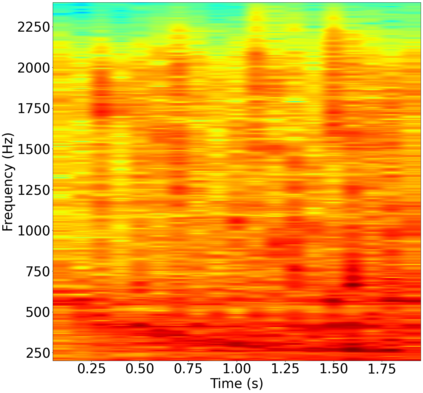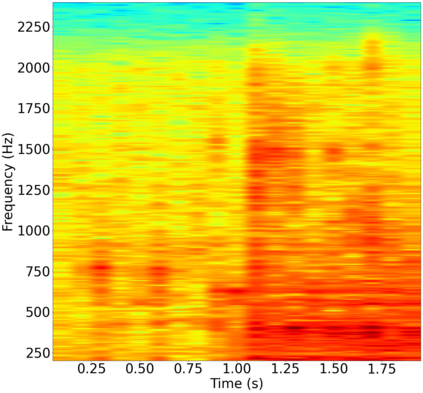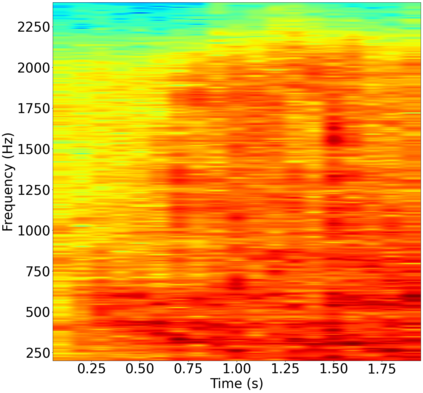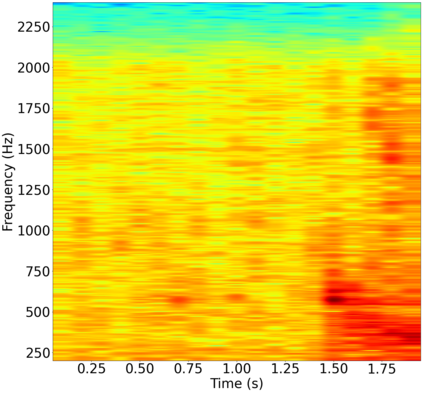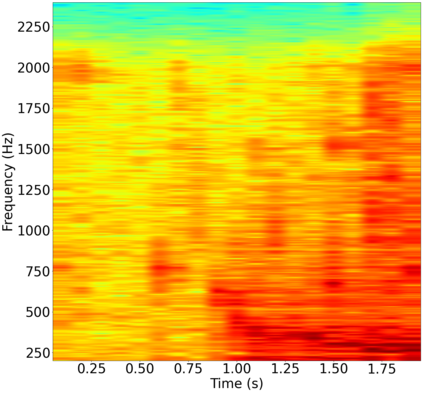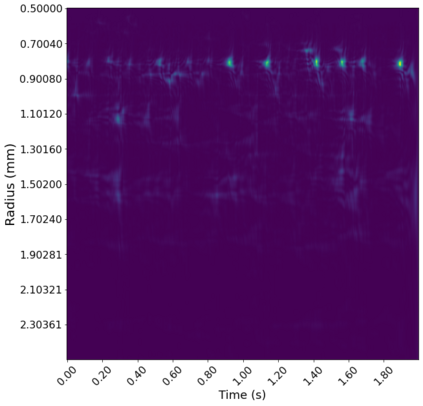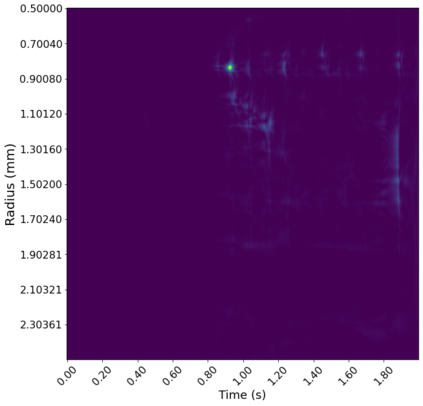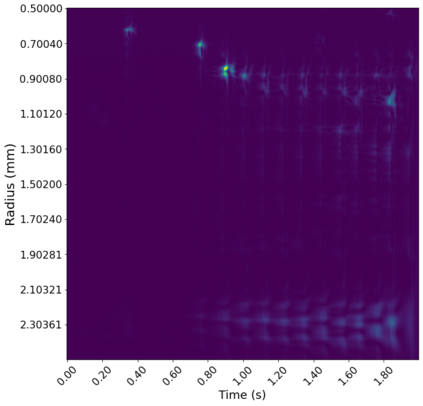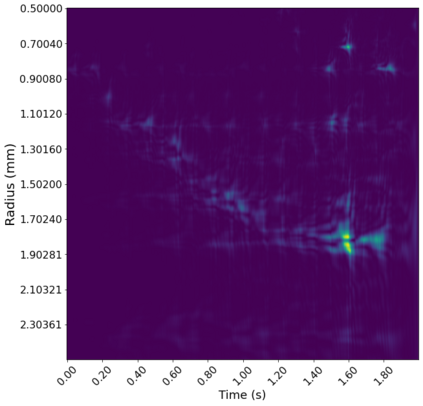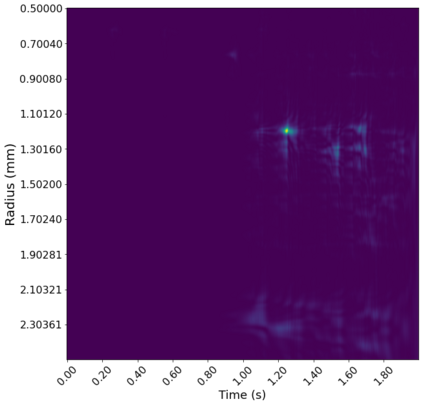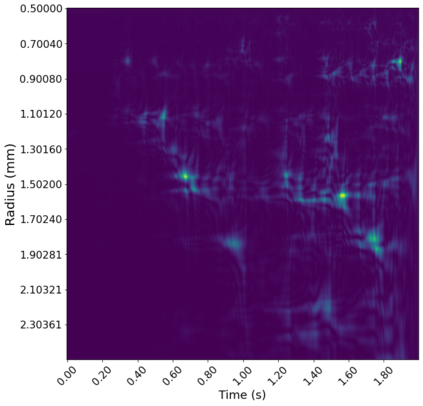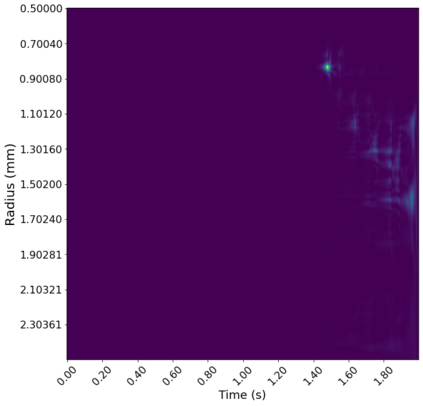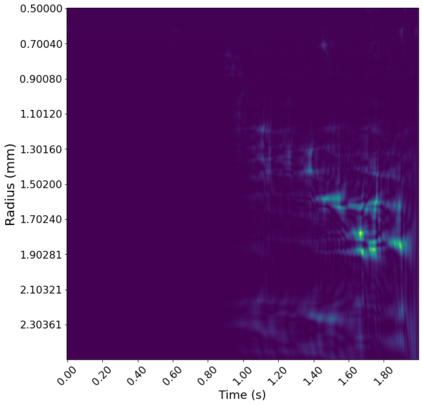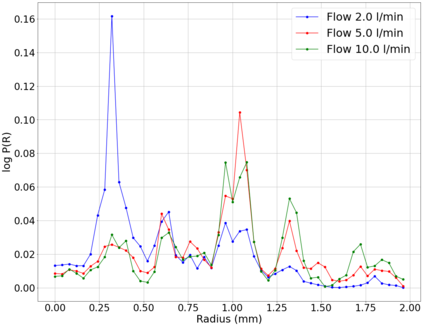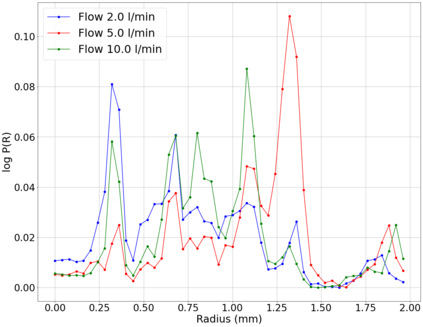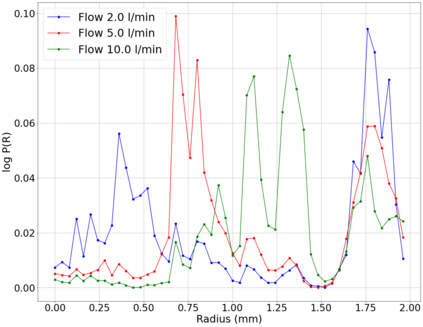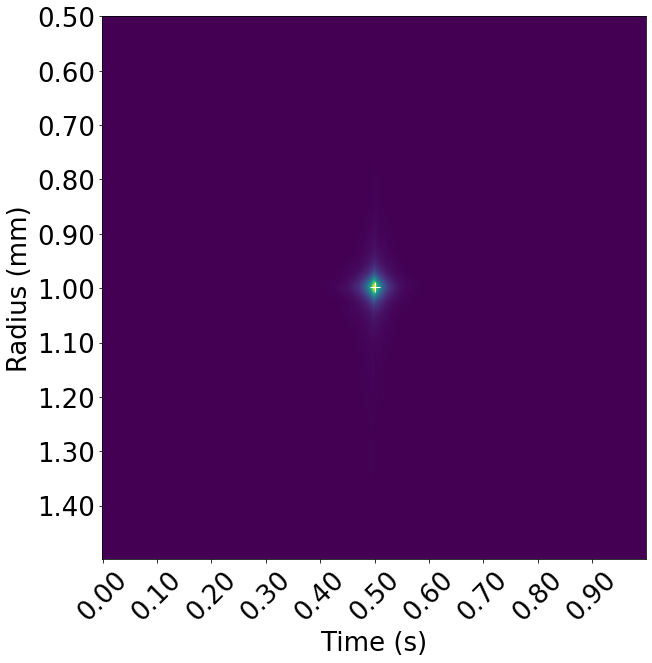The study of the acoustic emission of underwater gas bubbles is a subject of both theoretical and applied interest, since it finds an important application in the development of acoustic monitoring tools for detection and quantification of underwater gas leakages. An underlying physical model is essential in the study of such emissions, but is not enough: also some statistical procedure must be applied in order to deal with all uncertainties (including those caused by background noise). In this paper we take a probabilistic (Bayesian) methodology which is well known in the statistical signal analysis communitiy, and apply it to the problem of estimating the radii of air bubbles in water. We introduce the bubblegram, a feature extraction technique graphically similar to the traditional spectrogram but tailored to respond only to pulse structures that correspond to a given physical model. We investigate the performance of the bubblegram and our model in general using laboratory generated data.
翻译:水下气体气泡的声学排放研究是一个既有理论意义,也有应用意义的主题,因为它发现开发用于探测和量化水下气体渗漏的声学监测工具是一项重要应用,在研究这种排放时必须有一个基本物理模型,但这还不够:还必须采用一些统计程序来处理所有不确定性(包括由背景噪音造成的不确定性),在本文件中,我们采用一种概率(贝耶斯)方法,这种方法在统计信号分析中广为人知,并应用于估计水中空气泡的半射线。我们引入了气泡法,这是一种与传统光谱图相类似的特征提取技术,其图形化方法仅针对与特定物理模型相对应的脉冲结构。我们用实验室生成的数据调查气泡图和我们一般模型的性能。

